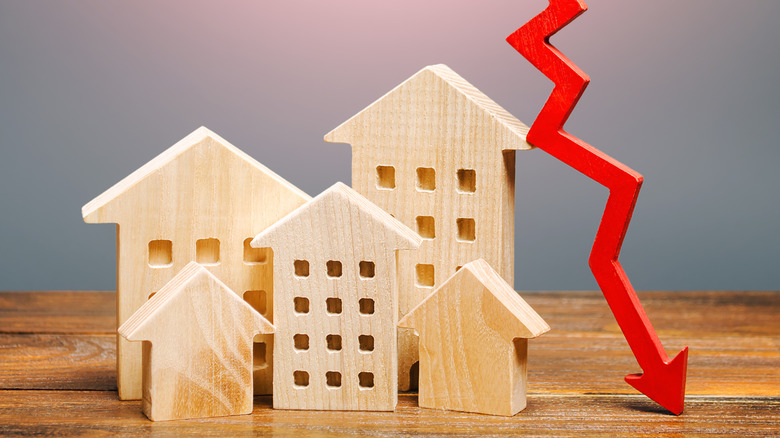Housing Prices Are Dropping In These Areas For A Predictable Reason
It looks as though the real estate market is finally showing signs of cooling down after a red hot few years. During the pandemic, there was a noticeable increase in the demand for housing across the United States. Since stay-at-home measures were implemented, it forced people to take a step back and calculate estimates of their current living spaces. That meant those who now found themselves working from home and even schooling in their residences were now looking for a little more room.
Other factors also caused the real estate market to blow up with an inventory of homes and new home buyers looking to dive in. A combination of more income allocated toward home investing as opposed to vacations and leisure activities and the lower-than-normal mortgage rates made it a tempting time to purchase new digs, according to the Joint Center for Housing Studies of Harvard University. However, all of this came at a significant price. The frenzied buying and selling of property during the pandemic saw the average American home jump from $310,000 to $385,000 in just under a year, according to Fortune. Now that the dust has settled and the world is slowly showing signs of normality, the market seems to be calming down as well. Let's look at the factors responsible for the dropping in home prices and what areas are seeing the most change.
What is causing housing prices to fall in these areas?
During the last few years' hot buying and selling market, some states showed an increase in people rushing to pick up property in their area. It seems as though the pull to pick up and move south was high as there was a boom in traffic to places such as South Dakota, South Carolina, Florida, and Alabama, according to a National Mover's Study by United Van Lines. The push to move was also away from more heavily populated states such as New Jersey, Illinois, and New York. But, now, the real estate market is slowing down mainly due to the growing mortgage interest rates reaching as high as 6%, which will dramatically impact the monthly cost of borrowing, according to NextAdvisor.
This then trickles down to affect the number of properties available on the market as the demand for buying a home decreases. Also, the higher mortgage rates now suggest that the average American can no longer afford the expensive real estate cost, meaning the average price of a home will more than likely drop to follow suit. There are many areas such as Provo, Utah; Tacoma, Washington; Denver, Colorado; and Salt Lake City, Utah that have already had up to 47% of their sellers forced to lower the listing price of their homes to offset the rising costs of borrowing, according to Redfin.

